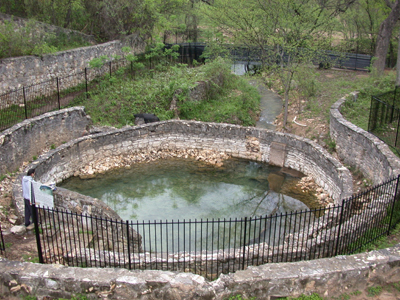5% of profits support Endangered & Threatened Species.
The only known habitat for the Austin Blind Salamander is Barton Springs, in Austin, Texas...

©Juliet Whitsett |Social: @juliet_whitsett_art
COLOR PALETTE SAMPLED FROM IMAGES OF THE BARTON SPRINGS SALAMANDER.

SPECIES INFO:
"In 1837, the village of Waterloo was founded on the banks of the Colorado River. The name Waterloo would later change to Austin becoming the capital of The Republic of Texas. Biologist adopted Austin’s former epithet in the description and scientific name of the Austin blind salamander (Eurycea waterlooensis). This species occupies the deep regions of the Edwards Aquifer, and is only observed at a couple of localities overlying fissures in the limestone where the Austin blind salamander is occasionally ejected from its deeper residence. The Austin blind salamander is one of two recognized species (the other being E. rathbuni) within the sub-clade Typhlomolge, best known for their obligate subterranean life history and fascinating characteristics (e.g. highly reduced eyes and pigmentation, and broad heads) attributed to their evolution in complete darkness."
-Ruben Tovar, Evolutionary Developmental Biologist
_________________________________________________
According to austintexas.gov the Austin Blind Salamander:
- Aquatic its entire life
- Needs flowing water with a fairly consistent temperature of 70ºF
- Thought to spend all or most of its life in the aquifer
- Occasionally individuals observed at the surface; may have been washed through the spring outlets
- Eggs have been observed in captivity, but not in the wild
- ½” to over 3” long
- Translucent surface with three pairs of red external gills
- Pearly-white to lavender colored
- Square-shaped snout
- Eye-spots, but no image-forming eyes
- Eats aquatic macro invertebrates and may eat juvenile salamanders or salamander eggs

Photograph image provided by © Tom Devitt
RANGE:
According to austintexas.gov
"The Austin Blind Salamander is known only from Barton Springs. Unlike the Barton Springs Salamander, Austin Blind Salamanders are not typically seen near the surface. Austin Blind Salamanders occupy the habitat below the surface of the springs, where their unique adaptations likely give them a selective advantage in a world of total darkness and limited food. They have been found in all four of the springs collectively known as Barton Springs: Parthenia in Barton Springs Pool, Old Mill (Sunken Garden), Eliza and Upper Barton. Unfortunately, because their habitat is not readily accessible by humans, and they are only occasionally observed in the springs, very little is known about the natural history of this species."

Old Mill Spring (Sunken Garden) in Zilker Park is the site where the Austin Blind Salamander (Eurycea waterlooensis) was first collected.
WATCH:
"This video shows how aquatic salamanders respire. This close-up of an Austin Blind Salamander shows red blood cells rapidly moving through capillaries in the salamander’s gills. In this process, the red blood cells pick up oxygen in the water and release carbon dioxide as they move through the gills, just like our lungs when we breathe air."
23 Second Video of the Austin Blind Salamander:
SUPPORT:
Shop this art HERE OR gift to the Threatened Texas Series: Venmo @Juliet-Whitsett (Your patronage donation helps spread the word about Texas' Endangered & Threatened Species).
THREATENED TEXAS SERIES:
There are 148 Threatened Species & 74 Threatened Species in Texas. Each palette & species is unique. I have sampled colors from images of actual Texas Threatened Species and created original art inspired by each group. 5% of the profits from this series enthusiastically goes to help Threatened & Endangered Species.
HOW YOU CAN HELP:
Wonder what you can do to help? One easy thing I have found is to write my US house Rep. and ask them to support The Recovering America's Wildlife Act RAWA Find out more at https://www.txwildlifealliance.org/or if you aren't in Texas, https://ournatureusa.com/
SOURCES:
https://www.inaturalist.org/guide_taxa/1513639

